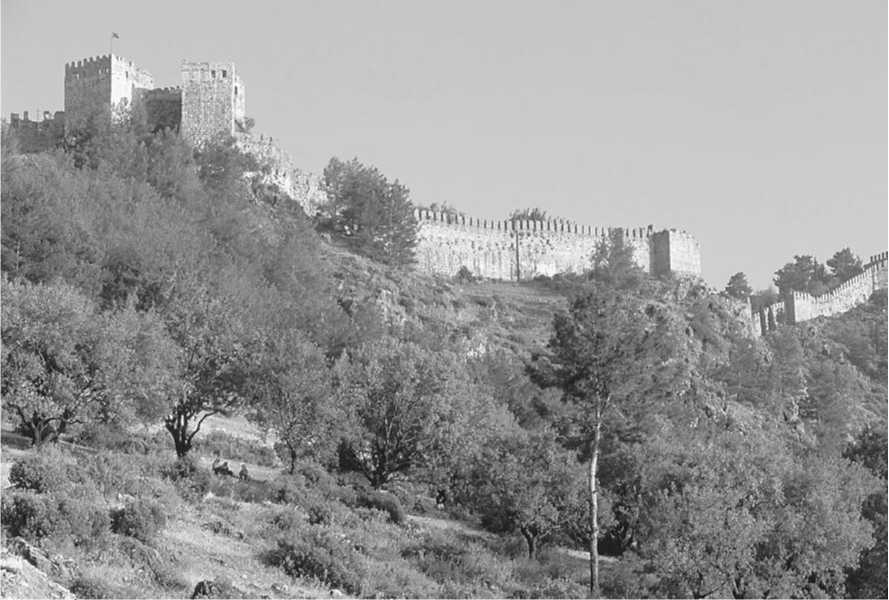In the late 900s, the Oghuz split into several groups, among them the Cumans, who moved into the Black Sea area of southern Russia and would remain there for two centuries. Another tribe of Oghuz, the Seljuks, began migrating southward and westward into Iran, causing their fellow Turks the Ghaznavids to spread into India. By then the Abbasids controlled their caliphate (the region they ruled) in name only; the Buwayhids (boo-WY-edz), a Shi'ite dynasty, actually ruled in Baghdad—that is, until 1055, when the Seljuks seized control. The fact that the Seljuks were Sunni Muslims, like the majority of people in the area, probably helped them win the allegiance of the conquered.
In 1060, the founder of the principal Seljuk dynasty, Toghril Beg (tawg-REEL; c. 990-1063) declared

City walls of Istanbul, Turkey, formerly Constantinople. The walls were built by the emperor Constantine in a. d. 324. Reproduced by permission of the Corbis Corporation.
Himself sultan. His successor, Alp Arslan (ruled 1063-72), dealt the Byzantines a near-fatal blow at Manzikert in 1071, and soon afterward the Seljuks gained control of Asia Minor, which they called the Sultanate of Rum— that is, Rome. At this point, they constituted a tiny ethnic minority in the region, but they had established a foothold.
The Seljuks reached the height of their power under Alp Arslan's son Malik Shah (mah-LEEK; 1055-1092), controlling a large portion of the Middle East. After that, they began to deMiddle Ages: Almanac cline, partly due to a lack of organization typical among nomadic-style rulers. The Crusades also played a role. The Seljuks had a less tolerant attitude than the Arabs toward Christians visiting the Holy Land, and their harassment of pilgrims—combined with their use of the name "Rome," which implied that they viewed themselves as inheritors of the Roman Empire— angered Europeans.




 World History
World History









